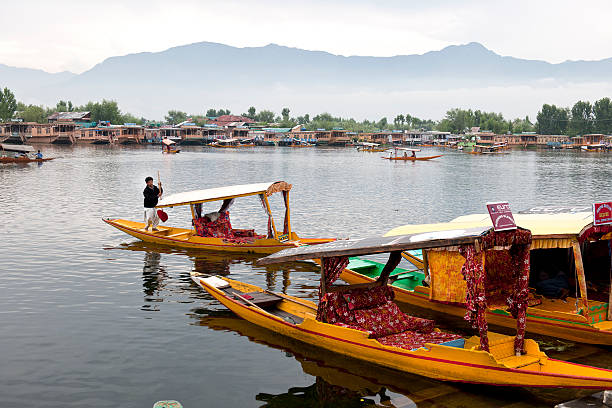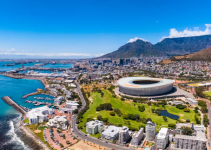You’ve booked your tickets to Kashmir. The excitement is real. Your mind is already wandering through apple orchards, houseboats on Dal Lake, and snow-capped peaks that look like they belong in a postcard.
But here’s the thing—Kashmir isn’t your average vacation spot. The weather can switch from sunny to freezing in hours. The terrain shifts from lakeside calm to mountain ruggedness. And while the place is stunning beyond measure, it demands that you come prepared.
Packing smart makes all the difference between a trip you’ll talk about for years and one where you’re scrambling to buy basics at inflated tourist prices. Let’s make sure you’re ready.

Things to Take with You on a Kashmir Trip
Here’s what you absolutely need in your bag to make your Kashmir adventure comfortable, safe, and unforgettable. Each item on this list solves a real problem you’ll face up there.
1. Layers—Not Just One Warm Jacket
Your first instinct might be to pack one heavy winter coat and call it done. Stop right there.
Kashmir’s weather is moody. You could start your morning in Srinagar needing a thick jacket, then by noon you’re peeling it off because the sun is out in full force. An hour later, the wind picks up, and you’re cold again. This constant shift is why layers are your best friend.
Pack a thermal base layer that sits against your skin. These are lightweight, trap heat, and you won’t even notice you’re wearing them. Add a fleece or wool mid-layer on top—something you can easily remove and stuff in your bag. Then comes your outer shell, preferably a windproof and waterproof jacket that keeps the elements out.
This system works because you control your temperature by adding or removing pieces. You’re not stuck roasting in a heavy coat or shivering in something too light. Plus, if you’re heading to Gulmarg or Pahalgam where the altitude cranks up the cold factor, you can wear all three layers at once without looking like a walking duvet.
2. Sturdy, Broken-In Walking Shoes
Flip-flops won’t cut it here. Neither will those pristine white sneakers you’ve been saving for Instagram photos.
Kashmir involves a lot of walking—cobblestone streets in old Srinagar, uneven paths around Mughal gardens, and possibly some light trekking if you visit Sonamarg or Betaab Valley. Your feet will be doing serious work, and they need proper support.
Bring waterproof hiking shoes or boots that you’ve already worn multiple times before your trip. New shoes equal blisters, and blisters equal misery. Your shoes should have good ankle support and grip because you’ll encounter wet stones, muddy trails, and slippery surfaces near water bodies. The mornings often bring dew that makes everything damp.
Pack a second pair of comfortable casual shoes for evenings or less intense days. You don’t want to wear heavy boots to a nice dinner at a houseboat restaurant. Having options keeps your feet happy, and happy feet make for a happy traveler.
3. High SPF Sunscreen and Lip Balm
People forget this one constantly, then spend half their trip dealing with painful sunburns and cracked lips.
The sun in Kashmir is deceptive. The air feels cool, sometimes even cold, so you don’t register that you’re getting fried. But the UV rays at higher altitudes are stronger than what you’re used to at sea level. Add in the reflection from snow if you visit during winter or early spring, and your skin is getting hit from multiple angles.
Get a broad-spectrum sunscreen with SPF 50 or higher. Apply it every morning, even if the sky looks cloudy. Reapply every few hours, especially if you’re spending time outdoors. Your face, neck, ears, and the back of your hands are particularly vulnerable.
The lip balm with SPF is equally critical. The dry mountain air combined with sun exposure will chap your lips faster than you can say “Dal Lake.” Keep one in your pocket and use it liberally. Your lips will thank you, and you’ll avoid that awful tight, cracked feeling that makes eating and talking uncomfortable.
4. A Reliable Power Bank
Your phone is going to die. Fast.
Cold weather drains batteries at an alarming rate. You’ll pull your phone out in Gulmarg to take photos of the snow, and watch the battery percentage drop like a stone. This happens because lithium-ion batteries lose efficiency in low temperatures. One minute you’re at 60%, then suddenly you’re at 20%, and there’s no charging point in sight.
Carry a power bank with at least 20,000mAh capacity. That’s enough to fully charge most smartphones three to four times. Keep it in an inside pocket close to your body when you’re out in the cold—the warmth helps it perform better.
Charge both your phone and power bank every night without fail. You’ll be using your phone constantly for photos, maps, booking cabs, and staying in touch with your hotel or tour guide. Running out of battery in an unfamiliar place adds unnecessary stress to your day.
5. Cash in Small Denominations
Digital payments work in Srinagar’s main areas. Step outside the city, and you’re back to a cash economy.
Many local vendors, small restaurants, and transportation providers in Kashmir prefer cash. Some don’t have card machines. Others have machines that mysteriously “aren’t working today.” ATMs exist but can run out of cash, especially during peak tourist season or on weekends.
Withdraw money before you start your daily adventures. Focus on ₹100, ₹50, and ₹20 notes rather than big bills. A shikara rider on Dal Lake or a chai seller near Nishat Bagh won’t have change for a ₹500 note. Having exact or near-exact amounts speeds up transactions and saves everyone the hassle of hunting for change.
Keep your cash in different places—some in your wallet, some in a zippered jacket pocket, maybe a small amount in your day bag. This way, if something gets lost or stolen, you’re not completely stuck. Smart travelers always have a backup plan.
6. Prescription Medications Plus Basic First Aid
Medical facilities in Srinagar are decent. Outside the city, options thin out quickly.
If you take regular medications, pack at least a week’s extra supply beyond what you think you’ll need. Flights get delayed. Plans change. You don’t want to be searching for a pharmacy in Pahalgam, trying to explain your prescription to a pharmacist who might not stock what you need.
Put together a basic first aid kit with these essentials: pain relievers like paracetamol or ibuprofen, anti-diarrheal medication, motion sickness tablets if you’re prone to car sickness (those mountain roads have serious curves), Band-Aids, antiseptic cream, and any allergy medication you typically use. Throw in some altitude sickness tablets if you’re going above 8,000 feet—places like Gulmarg sit at around 8,700 feet, and altitude sickness hits some people harder than others.
Don’t forget personal hygiene items specific to your needs. Pharmacies in tourist areas mark up prices significantly, and they might not carry your preferred brands.
7. Reusable Water Bottle and Purification Tablets
Staying hydrated at altitude matters more than you think.
The mountain air is dry, and you lose moisture through breathing without realizing it. Dehydration sneaks up on you and manifests as headaches, fatigue, and general crankiness—none of which improve your vacation experience.
Bring a sturdy reusable water bottle, preferably insulated. An insulated bottle keeps water from freezing in very cold conditions and keeps it cool during warmer parts of the day. Fill it up at your hotel every morning.
Water quality varies across Kashmir. Hotels and houseboats typically provide filtered or boiled water. But if you’re trekking or visiting remote areas, you might need to refill from streams or taps of uncertain quality. Water purification tablets are lightweight, cheap insurance. Drop one in your bottle, wait the recommended time, and you’ve got safe drinking water. They’re especially useful for day trips where you’ll be away from reliable water sources for hours.
Buying bottled water every day isn’t just expensive, it’s environmentally problematic in a place as beautiful as Kashmir. Your reusable bottle is the smarter, more responsible choice.
8. A Good Camera or Smartphone with Extra Storage
Kashmir is absurdly photogenic. You’ll run out of storage before you run out of things to photograph.
Every corner presents another shot worth taking. The houseboats with their intricate woodwork. Saffron fields that look like they’ve been painted gold. Chinar trees with leaves in fifty shades of red and orange. Mountains that seem to touch the clouds.
If you’re bringing a dedicated camera, make sure you pack extra memory cards and batteries. Cold weather drains camera batteries just like phone batteries. If you’re relying on your smartphone, free up space before you leave. Delete old apps, transfer photos to cloud storage, and clear your cache. You want maximum capacity available.
The light in Kashmir is special—soft and clear in ways that make even amateur photos look professional. Early mornings and late afternoons give you that golden hour quality that photographers chase. But you can’t capture any of it if your device is full.
Consider bringing a portable hard drive or using cloud backup if you’re shooting in RAW format or taking lots of video. You’ll kick yourself later if you have to start deleting photos mid-trip to make room for new ones.
9. Warm Accessories That Actually Work
Gloves, scarves, and hats aren’t fashion statements in Kashmir. They’re necessities.
Your body loses heat fastest through your extremities and head. You can be wearing the warmest jacket money can buy, but if your hands are frozen and your ears are stinging from cold wind, you’ll be miserable.
Pack thermal gloves that let you still use your phone—touchscreen-compatible ones are widely available now. Regular gloves force you to take them off every time you want to snap a photo or check directions, which defeats the purpose. Your fingers go numb in minutes in that kind of cold.
A wool or fleece scarf protects your neck and can be pulled up over your mouth and nose when the wind gets brutal. It’s also versatile—you can use it as an extra layer around your shoulders or even as a makeshift blanket on a cold bus ride.
Get a proper winter hat that covers your ears. Those trendy beanies that sit on top of your head look cool but provide almost no warmth. You want something that actually insulates. If you’re visiting in peak winter, consider a hat with ear flaps or a balaclava-style option for extremely cold days.
These items take up minimal space in your bag but make a massive difference in your comfort level. Don’t skimp here.
10. A Respectful Attitude and Modest Clothing
This one isn’t a physical item you pack, but it’s perhaps the most important thing you bring.
Kashmir is a predominantly Muslim region with conservative cultural norms. Dressing modestly shows respect for local customs and makes your interactions with residents smoother and more positive. Women should pack long pants or long skirts, and tops that cover the shoulders and chest. A light shawl or dupatta is incredibly useful—it can cover your head when visiting religious sites, add warmth, or provide an extra layer of modesty when needed.
Men should avoid sleeveless shirts and very short shorts, especially when visiting mosques or shrines. Long pants and sleeved shirts are your safe bet. This isn’t about restricting your freedom—it’s about being a considerate visitor.
You’ll notice that locals appreciate it when tourists make an effort to dress appropriately. It opens doors to genuine conversations and warmer welcomes. You’re a guest in someone else’s home. Acting like one costs you nothing and gains you respect, better service, and often insider tips on the best places to eat or hidden spots to visit.
Keep an open mind about local customs around food, prayer times, and social interactions. Kashmiris are generally warm and hospitable people who love sharing their culture with respectful visitors. Meet that hospitality with courtesy, and your trip becomes richer for it.
Wrapping Up
Kashmir gives you experiences that stick with you long after you’ve returned home. Those experiences get better when you’re comfortable, prepared, and respectful of where you are.
Pack smart. Layer your clothing. Protect yourself from the elements and altitude. Respect local culture. These aren’t complicated rules; they’re just practical steps that let you focus on what matters—the stunning beauty around you, the incredible food, the kind people you’ll meet, and the memories you’re creating.
Your Kashmir trip is waiting. Make sure you’re ready for it.


